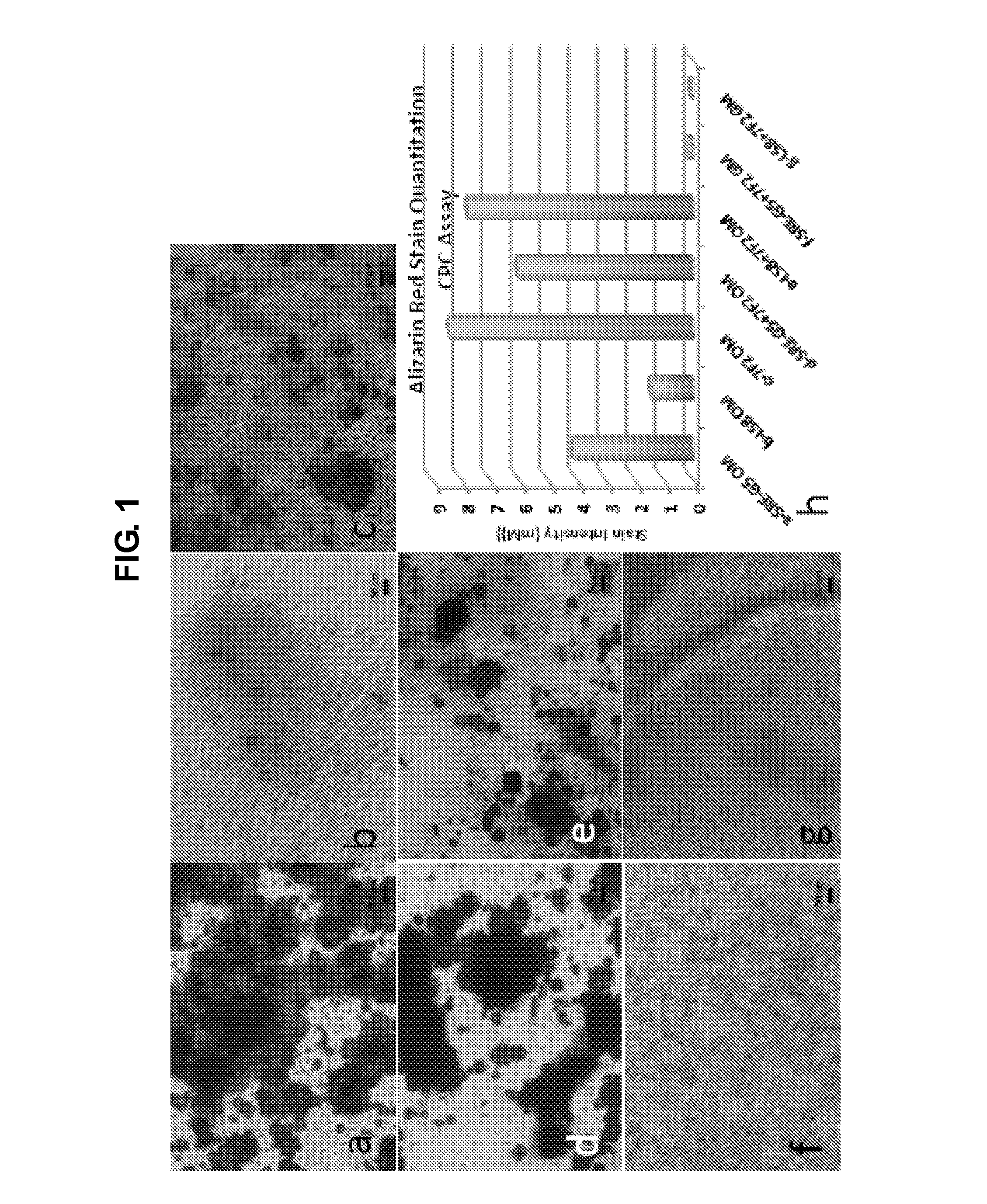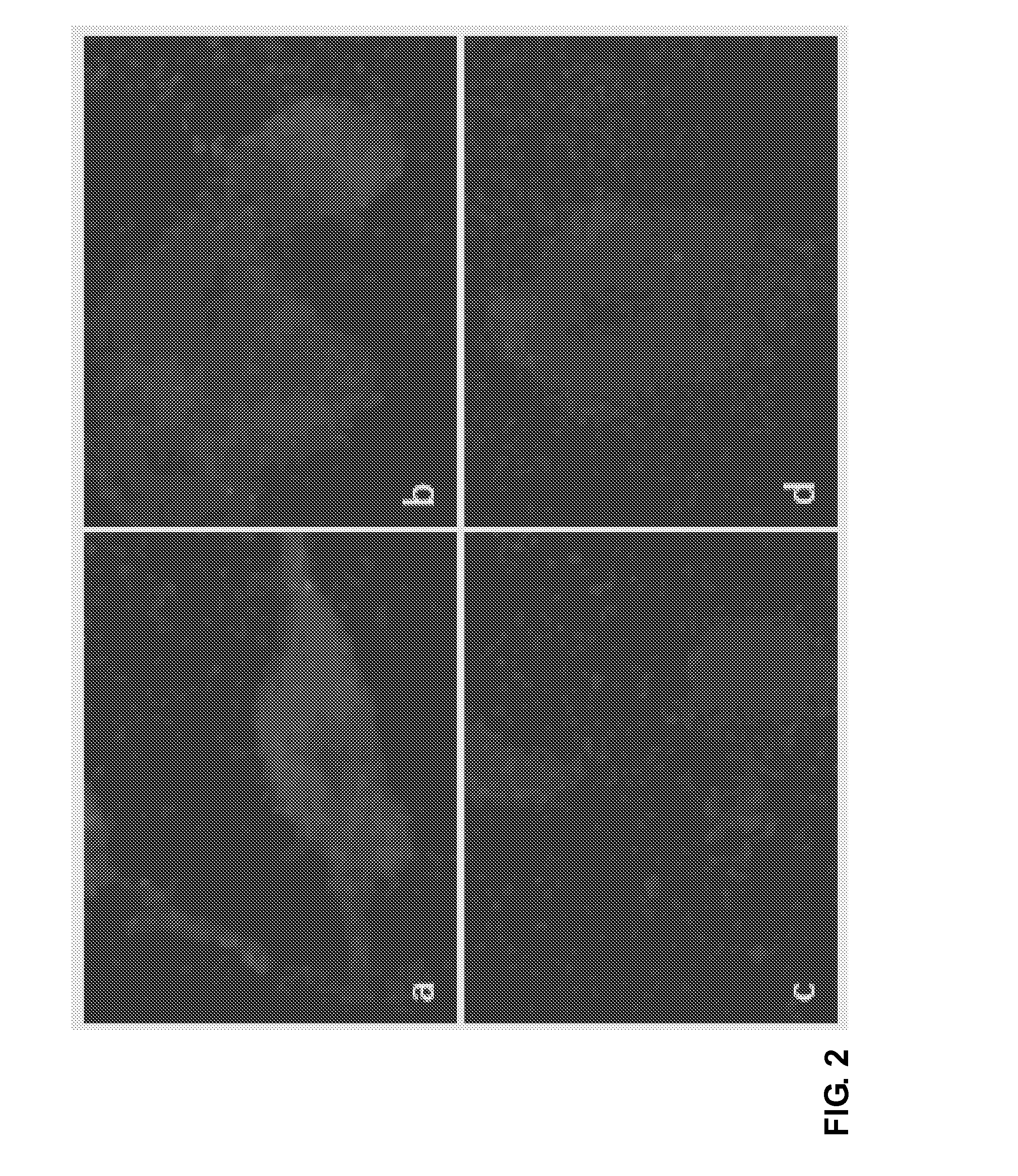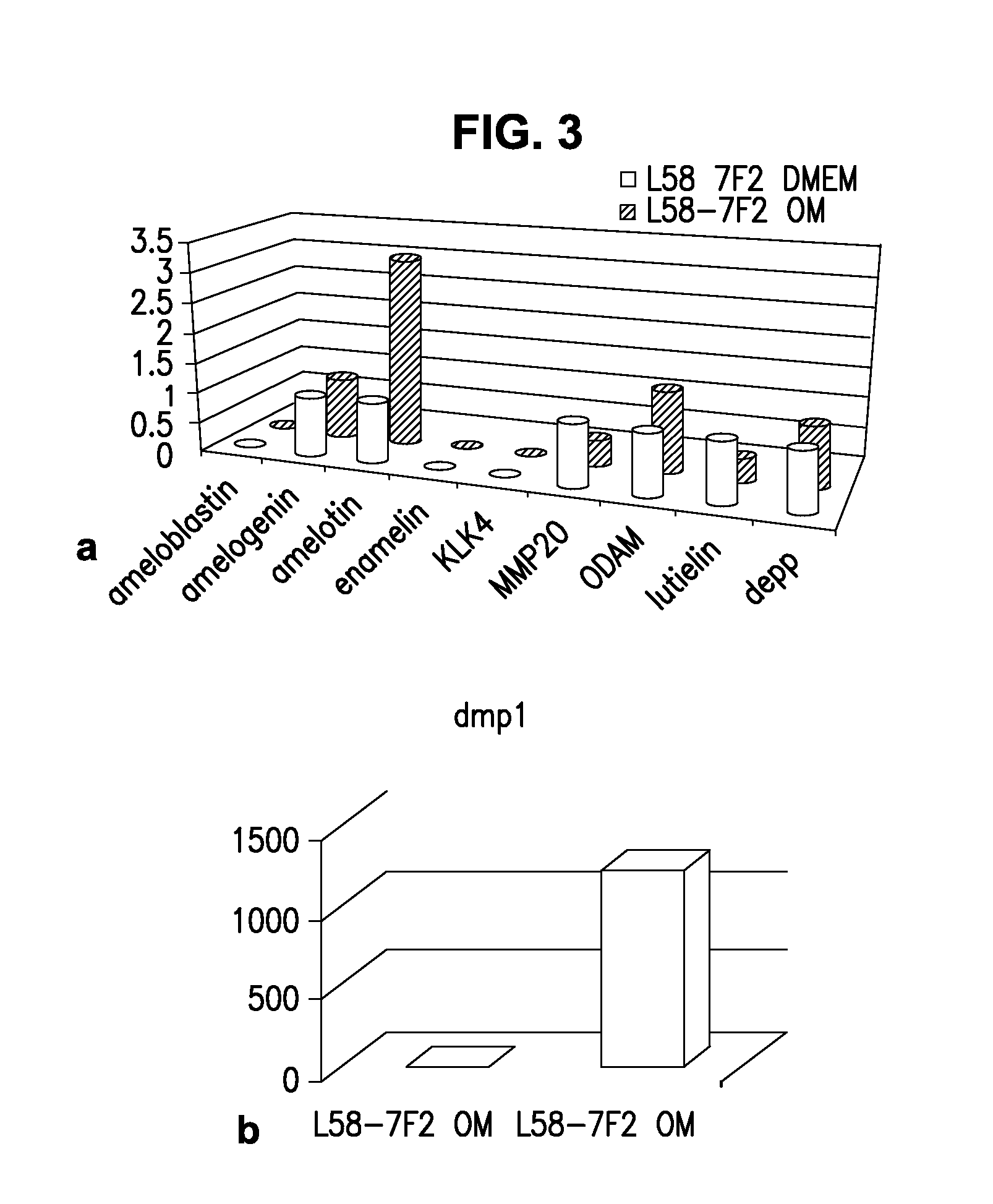Production of dentin, cementum and enamel by cells
a technology of cementum and enamel, which is applied in the field of dental materials production, can solve the problems of inability to mass produce, inability to meet human immune system, and common dental restoration materials such as mercury amalgam and composite resins, and achieve the effect of robust mineralization
- Summary
- Abstract
- Description
- Claims
- Application Information
AI Technical Summary
Benefits of technology
Problems solved by technology
Method used
Image
Examples
example 1
[0114]This example provides a co-culture system that stimulates mineral apposition by ameloblast-like cells and osteoblast / odontoblast-like cells in an approach that is thought to simulate epithelial-mesenchymal interaction. Experiments were designed to show interaction between ameloblast (epithelial) and osteoblast (mesenchymal) during co-culture.
[0115]Two ameloblast cell lines (LS8 and SRE-G5) and an odontoblast / osteoblast-cell line (7F2, ATCC) were co-cultured in chemically defined, mineral-stimulating medium (osteogenic media, OM) (StemPro Osteogenesis Differentiation Kit, Invitrogen, Carlsbad, Calif.). SRE-G5 cells were established dental epithelium-derived clones from 6-day-old rat incisors the largest producers of amelogenin mRNA (Abe et al. 2007 J Biosci Bioeng 103 (5), 479-485).
[0116]The same cells were co-cultured in non-differentiation growth medium as control groups. In the control group, growth media (GM) for each cell (for 7F2+LS8 DMEM with 10% FBS and for 7F2+SRE-G5 D...
example 2
[0126]This example shows images of ameloblast cell lines co-cultured in OM or GM along with Alizarin Red stain intensity for each culture environment.
[0127]Two ameloblast cell lines (LS8 and SRE-G5) and an odontoblast / osteoblast-cell line (T4-4) were co-cultured in OM or GM. Alzarin Red stain intensity was measured for each culturing method.
[0128]Representative results are shown in FIG. 4.
example 3
[0129]Col1a1 (2.3 kb)-Cre mouse was crossed with Rosa26R mouse and the GFP positive cells are osteoblast lineage cells. The results show that PDL cells connecting to the tooth are osteoblast lineage cells (see e.g., FIG. 5A-C).
PUM
| Property | Measurement | Unit |
|---|---|---|
| diameter | aaaaa | aaaaa |
| diameter | aaaaa | aaaaa |
| diameter | aaaaa | aaaaa |
Abstract
Description
Claims
Application Information
 Login to View More
Login to View More - R&D
- Intellectual Property
- Life Sciences
- Materials
- Tech Scout
- Unparalleled Data Quality
- Higher Quality Content
- 60% Fewer Hallucinations
Browse by: Latest US Patents, China's latest patents, Technical Efficacy Thesaurus, Application Domain, Technology Topic, Popular Technical Reports.
© 2025 PatSnap. All rights reserved.Legal|Privacy policy|Modern Slavery Act Transparency Statement|Sitemap|About US| Contact US: help@patsnap.com



